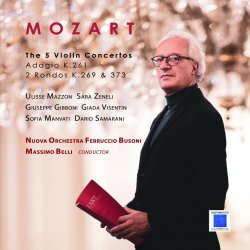

Antonio Vivaldi's Bassoon Concerts are a very large corpus of compo sitions , surpassed only by those for violin : they are thirty-nine in ali, two of which are incomplete . They have been handed down to us as autographed manuscripts belonging to the composer 's persona! archive, since probably Vivaldi's intention was to assign them to the Venetian bassoonists he knew personally, without any ambition to have them spread intern ationally . We do not know the names , so we remain in the field of suppositions: on the autograph of the Concerto RV 502 we read the dedica- tion (however deleted) to Gioseppino Biancardi, probably a Venetian bassoonist of the '700 of which we only know that he was counted among the members ofthe Arte de 'Sonadori of Venice . A second hypothesis, perhaps more likely, is that Vivaldi wrote most of the bassoon concertos for some of the daughters of the Ospedale della Pietà in Venice,where he was a violin teacher first, and later "concertmaster" . Furthermore, at the time it was normai that the instrument was also played by oboists, without being supported by the documents.
However, the most accredited hypothesis is that the concerts were dedicated to the Bohemian Count Vàclav Morzin, one of Vivaldi 's pupils and recipient of many concerts - such as the Op . 8, the collection that includes The Four Seasons - at whose service Antonin M6ser, the famous virtuoso bassoon ist, wor ked.
These concerts are a splendid testimony of Vivaldi 's stylistic and compositional maturity, capable of enhancing the expressive qualities of the instrument without heaviness. The ideai interpretation is based on the artistic rendering of gallant rhythmic inventions and the most refined articulations , finding a particular balance between the virtuosic passages and the lyricalmoments, between the comic and the tragic,masterfully alternating joy andmelancholy expressiveness .
Among the most famous concerts we mention :
the Concerto in G minor for flute, strings and continuo RV 439 known as "La Notte", in six movement s, despite the classic tripartition being continually subtended .
The atmosphere of mystery and restlessness, supported by the silence of the pauses and the con- stant rhythmic pulsation ofthe dotted quaver present in the accompaniment . The final pedal pre- pares for the sudden irruption ofthe Ghosts (subt itle ofthe second movement , Presto). Through a very complex canon writing, Vivaldi manages to develop a sense of anguish, linking it to visions and nightmares represented by very fast scales , broken chords and repeated note s. The Presto sud- denly stops with a suspended cadence , very cantabile : the flute is accompanied almost silently by the strings, in a serene atmosphere. The fourth half, Presto, seems to revive the Ghosts.
The description of "II Sonno '; subtitle of the fifth movement (Largo), is similar to that in the Autumn (op. 8, n. 3).The absence of the harpsichord helps to evoke a suggestive atmosphere of "stili time". The Allegro finale is based on episodes of syncopated figurations, repeated notes and broken chords of the Ghosts, where the particularly lively rhythmic pulsation once again contributes to re- calling the disturbing and anguished aspects of the Night.
The Concerto in E minor RV 484 , is performed more frequently today;
The first movement begins with the main theme presented by the strings ; then the bassoon enters and develops it with imitations in cheerful dialogue with the strings . The centrai movement is also
entrusted to the introduction from the strings and taken up by the bassoon in a suffused atmosphere full of lyricism. The final Allegro is very pleasant to listen to and is very demanding for the soloist,struggling with ornamentation and virtuosic jumps.
"Arsilda, Regina di Ponto;' was performed for the first time at the Teatro Sant'Angelo in Venice in October 1716 to music written entirely for the occasion, without musical inserts from other com- positions .The drama, however, had already beenwritten some time before, but the fear of censor- ship forced the Red Priest to a meticulous work of cuts and revisions and readjustments, both in music and in text.The success was enormous, but it was never taken up again.The complex story of the opera is not particularly interesting, but the beauty of the individuai arias is remarkable, from which one can see the extraordinary ability to write the accompaniment that Vivaldi demon- strates in each of his operatic compositions. An exceptional orchestrator indeed. Themain voices are the contralto, which requires a remarkable ability to change register, the castrato, which requires virtuosity andagility,but alsodramatic skills,aswellas the classic tenor , for whose rolethe best ofthe world were always chosen at the time.
A particular consideration deserves the concertation, which shows a very refined care in unravel-
ing the score written fora large orchestra of straight flutes, oboes, natural horns, theorbo, guit ar, strings and two harpsichords, one for continuo and one solo. In addition to the orchestrai composi- tion, the staging ofthe opera is very interesting, which over the years has given great space to the imagination ofthe directors who have alternated in the scenic direction ofthe opera.
Finally, it is interesting tomention the first interpreters of the opera: the contralto Anna Vincenza Dotti in the role of Arsilda , Nicandro soprano (in travesti) was sung by Antonia Pellizzari , Cisardo (bass) was entrusted to Angelo Zannoni, Tamase the tenor was played by Annibale Pio Fabri, Barzane soprano was the castrato Carlo Cristini, Mirinda was entrusted to the soprano Maria Teresa Cotte and Lisea, (contralto),to Anna Maria Bombaciari.
Translation


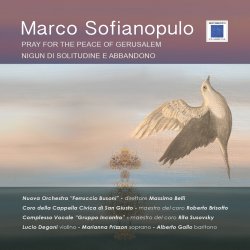
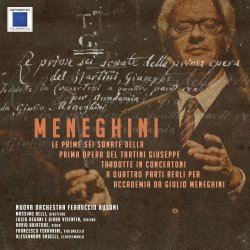

Gabriele Screpis
Born in Genova, he studied music at the Niccolò Paganini Conservatory of his city, graduating with full marks and honors. He is currently the first bassoon soloist of the Orchestra of La Scala theater in Milan and the homonymous Philharmonic. Since his youth he is appreciated for his technical and expressive skills winning numerous international competitions. As first bassoon he has collaborated with the major conductors of the international scene such as: Leonard Bernstein, Carlo Maria Giulini, Daniel Barenboim, Pierre Boulez, Riccardo Muti, Lorin Maazel, Zubin Metha, Giuseppe Sinopoli, Riccardo Chailly, Antonio Pappano, Valery Gergiev and many others. Beside his orchestra activity, he has also worked as a soloist and in chamber ensembles. He has participated in important concert seasons such as The Festival of Aix en Provence, The International Musical Weeks of Naples, the Chamber Season of Teatro alla Scala and the National Academy of Santa Cecilia in Rome. He has performed around the world in prestigious venues such as Carnegie Hall in New York, Tonhalle in Zurich, Suntory Hall in Tokyo, and the St Petersburg Philharmonic Hall. He teaches at the Accademia of La Scala theater and regularly holds master classes.
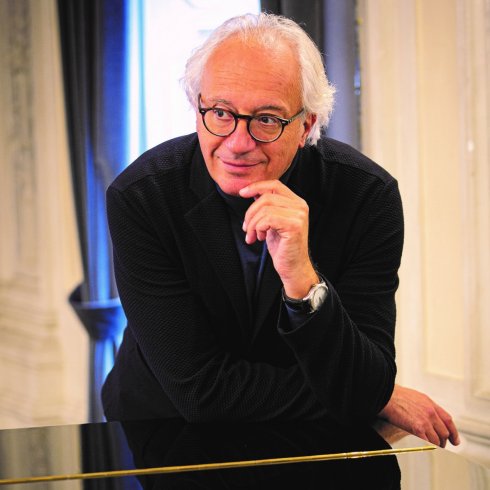
Massimo Belli
Began studying the violin with his father, then continued with Bruno Polli. Under the tutelage of Renato Zanettovich he graduated cum laude at the “B.Marcello” Conservatory of Venice. He followed specialization courses in Fiesole with the Trio di Trieste and Piero Farulli, and at the Accademia Chigiana di Siena with Henryk Szeryng. He was for two years a student of Salvatore Accardo’s at the Accademia di Alto Perfezionamento “W.Stauffer” in Cremona. The winner of numerous national and international competitions, he made his debut at sixteen at the Teatro Politeama Rossetti of Trieste for the Concert Society; later, as a soloist, he performed in Europe, the ex-Soviet Union, Turkey and South America. He has performed the principal concertos in the violin repertoire, accompanied by such notable orchestras and he was lead violinist in the Italian Youth Orchestra, the Busoni Orchestra, the Haydn Philharmonia, and both lead violinist and conductor of the Virtuosi dell’Ensemble di Venezia. The great Triestine composer Giulio Viozzi dedicated to Massimo Belli a piece for solo violin, “Tema variato”, published by Pizzicato. He has broadcast on radio and television in Italy, the Soviet Union, Germany, Yugoslavia, Brazil, and Austria, and has recorded for Sipario Dischi, for Nuova Era and he currently records for Concerto Classics, Warner Classics, Brilliant Classics and Movimento Classical. He studied conducting with Aldo Belli and Julian Kovatchev, and is the conductor of the New “Ferruccio Busoni” Chamber Orchestra. He teaches violin at the Trieste Conservatory. He has taught at the United World College of the Adriatic, at the summer courses in Solighetto, and was invited to give Masterclasses at the Conservatorio Reale di Murcia (Spain), the Hoochschule of Mannheim and the Academy of Tallin and Belarusian State Academy of Musik di Minsk. He is also a teacher at the International Music Masterclasses of Cividale.He was for five years Vice-Director of the “Giuseppe Tartini” Conservatory of Trieste and was on the Administrative Council of Trieste’s “Giuseppe Verdi” Opera House Foundation.He recently conducted I Cameristi del Maggio Fiorentino and Euro Sinfonietta Wien.
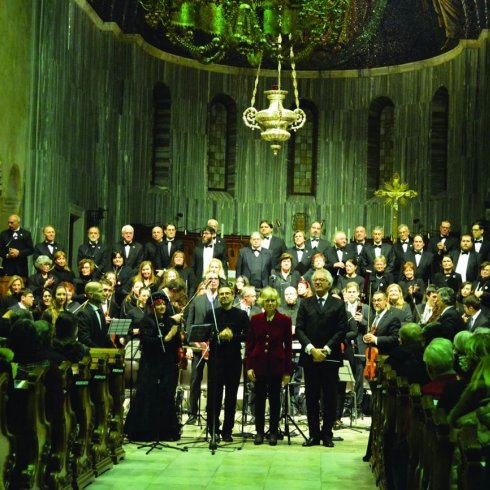
The “Ferruccio Busoni” Chamber Orchestra
The “Ferruccio Busoni” Chamber Orchestra, a well-known ensemble founded in 1965 by Aldo Belli, is one of the first chamber orchestras to appear in Italy during the post-war period. It is also the oldest in the Region of Friuli Venezia Giulia, and in 2008 was recognized by the Region as an “institution of regional importance”. It is made up of established instrumentalists, winners of important international competitions, who can boast extensive concert experience as both soloists and members of chamber groups, passing on the musical culture of the Trio di Trieste and the Quartetto Italiano whose pupils they were. In 2005 and 2010 the orchestra celebrated its 40th and 45th anniversaries with concerts featuring the special appearance of the violinist Salvatore Accardo, the concerts met with great popular and critical acclaim. The concert celebrating its 50th anniversary, held in collaboration with Trieste’s Teatro Verdi, had as its guest the violinist Domenico Nordio, and was highly successful. The “live” recording of it was published by the Amadeus review in December 2015.For the 50th anniversary the Friuli Venezia Giulia Region published a book on the Busoni Orchestra, as part of the Region’s promotion of its image at an international level.The orchestra has caught the attention of public and critics alike by its performances in Austria, Slovenia, Croatia, Germany, Switzerland, Tunisia, Russia and Italy, with excellent soloists.On October 30th, 2013 the Busoni Orchestra, as Italy’s representative, gave the opening concert in the International Silver Lyre Festival, organized by the Philharmonic Society of St. Petersburg, enjoying a great success with the audience.Ever ready to promote contemporary music, the orchestra has to its credit the premiere performances of a good number of works – some of which are dedicated to the Busoni Orchestra – by such contemporary composers as Nieder, Sofianopulo, Margola, Conti, Viozzi, Coral, Dott, Visnoviz, Bellini, Glass and the premiere performances in modern time by such composers as Giuseppe Tartini, Wolfgang Amadeus Mozart, Andrea Luchesi e Alessandro Rolla.The Busoni orchestra is the creator and principal performer in the Mattinate Musicali at Trieste’s Museo Revoltella, a celebration of chamber music which has now been active for nineteen years.The ensemble has recorded 20 CD for the record company Velut Luna, Concerto Classics, Brilliant Classics, Warner Classics e Amadeus which have received prestigious recognition.Since 2013 the Busoni orchestra has been involved in a project to rediscover the music of the Veneto composer Andrea Luchesi; so far the Milan record company “Concerto Classics” has published five world premiere CDs dedicated to his music, recorded by the Busoni orchestra. The Busoni orchestra has recorded for Italian Radio and Television (RAI), for SKY Classic and for Canale 5.In March 2018 the review Amadeus published the CD including world premiere recordings of the two Concerti of Giuseppe Tartini with the violinist Laura Marzadori. In May 2019 the record company Brilliant Classics published the CD with music by Ermanno Wolf Ferrari recorded with Fabien Thouand e Valentino Zucchiatti. In January 2020 Movimento Classical first published the complete version of Giulio Meneghini's Concertoni.
